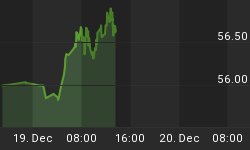From a fundamental perspective, the markets have much to worry about with excessive debt in the United States and Europe. The euro zone is not yet ready to authorize more money for Greece. Spain and Italy have not requested formal bailouts, which leaves the European Central Bank on the bond-buying sidelines.
The markets want some "resolution" regarding the rapidly approaching fiscal cliff. Let's assume the dysfunctional system in Washington can reach a compromise; it is difficult to see how raising taxes and cutting government spending will be economy-or-market friendly.
Markets with profiles similar to the present day often experience one to three week countertrend rallies. Having said that...the current market remains in a dangerous state and could experience a "flash crash" type plunge.
The following are covered in this week's video: (a) bonds vs. stocks (01:45 mark), (b) stocks vs. Treasuries (05:40), (c) S&P 500 vs. VIX (11:28), (d) Fear Index (12:46), (e) stocks above 200-day (14:34), and (f) All-World Stock Index Ex - USA (16:55).
After you click play, use the button in the lower-right corner of the video player
to view in full-screen mode. Hit Esc to exit full-screen mode.
Weekly RSI below 50, a market below its 22-week, and bearish weekly MACD crosses are all concerning (see below). Can these charts help? see some of our recent market calls here.

The charts shown here will improve at some point; that process could begin on Monday or it could begin in three w eeks. Until the charts improve, our bias will be to the bearish end of the spectrum (hedges, high cash position, etc.). The chart below shows a breakdown (red arrow) for risk-on relative to risk-off similar to May 2012 (a poor period for risk).

A 50-day moving average with a negative slope is indicative of an intermediate-term downtrend. Notice how the market acted after turns down (red arrows) and a turn up (green arrow).

The chart below shows stocks breaking down relative to bonds. Below the thick horizontal red line, stocks have not performed well (see bottom of chart for S&P 500).

At lasting bottoms, and more importantly favorable risk-reward entry points, bullish divergences tend to be present as they were at the June 2012 low. Both Rate of Change (ROC) and RSI made new lows last week with price, which is not what we want to see from a possible turn perspective.

Bad things tend to happen when the risk-on vs. risk-off ratio below closes below the centerline. We closed below the center line this week.

Market breadth continues to deteriorate. We would like to see the chart below move back above the blue and red moving averages.

Note the slope of the trendlines originating from the top of the chart; they are all down, which defines a downtrend. When stocks are in a downtrend the odds are against investors.

These charts could improve soon...they may not improve for some time. We do not need to forecast what will happen next...we just need to pay attention with an open mind. Markets will tell us what to do if we are willing to push our biases and egos aside. Targets and forecasts bring egos and bias into play. We all make better decisions when we reduce biases and remain open to bullish or bearish outcomes. It can be very expensive to argue with the markets or the charts above.
If you find these charts helpful, you can help us by re-tweeting a link to this page or forwarding a link to a friend. You probably know someone else who might like to see these charts as well. Thanks to all our clients, readers, and followers - your support is never taken for granted. Ciovacco Capital on YouTube, Twitter, and Facebook.















